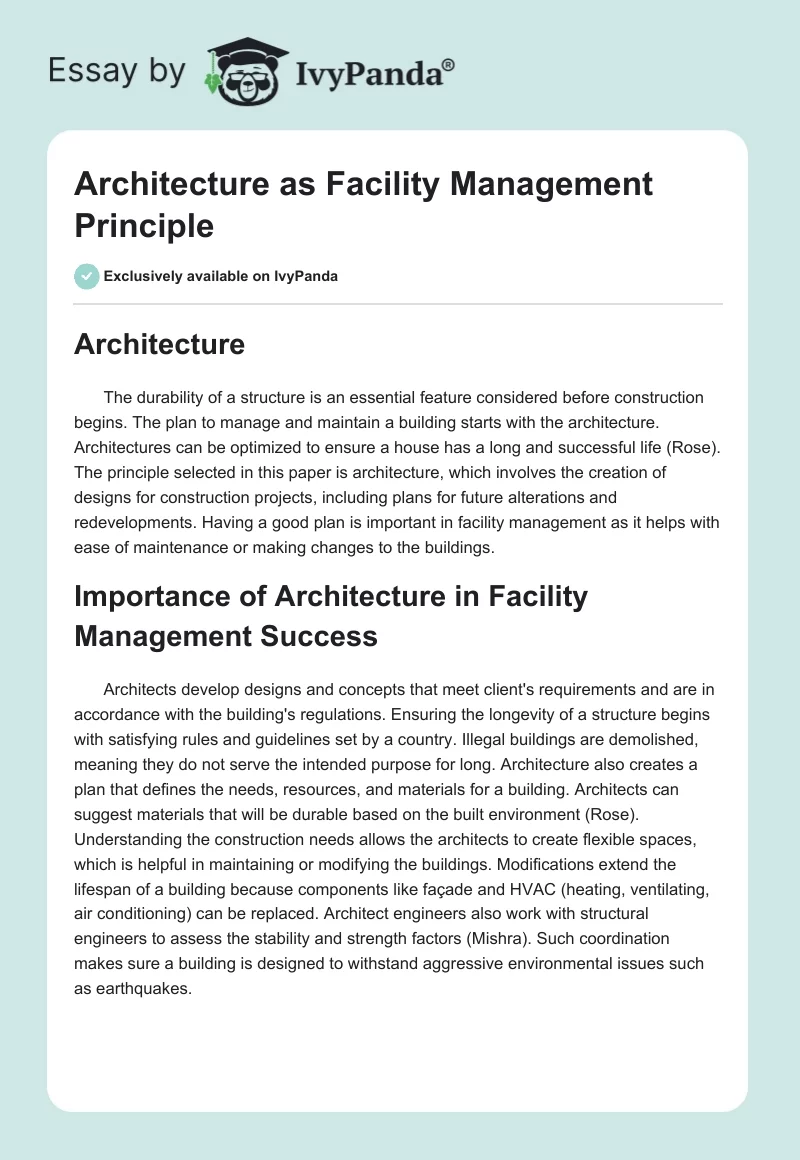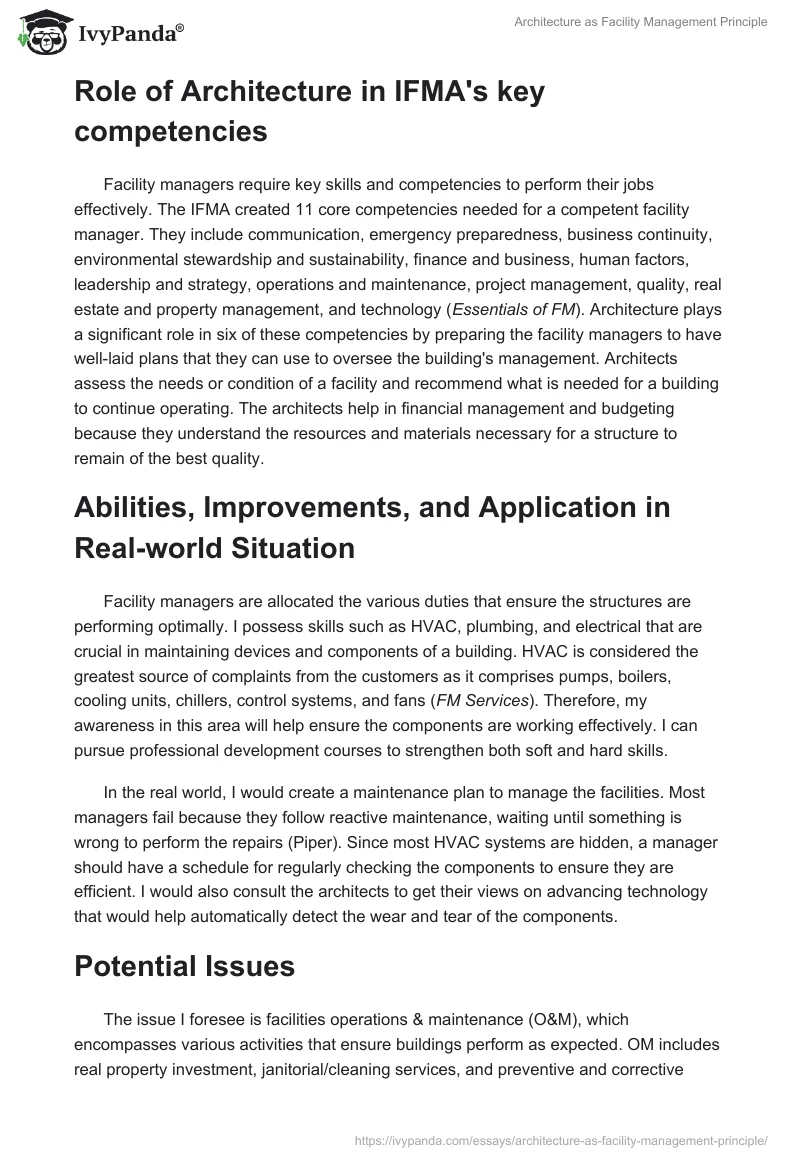Architecture
The durability of a structure is an essential feature considered before construction begins. The plan to manage and maintain a building starts with the architecture. Architectures can be optimized to ensure a house has a long and successful life (Rose). The principle selected in this paper is architecture, which involves the creation of designs for construction projects, including plans for future alterations and redevelopments. Having a good plan is important in facility management as it helps with ease of maintenance or making changes to the buildings.
Importance of Architecture in Facility Management Success
Architects develop designs and concepts that meet client’s requirements and are in accordance with the building’s regulations. Ensuring the longevity of a structure begins with satisfying rules and guidelines set by a country. Illegal buildings are demolished, meaning they do not serve the intended purpose for long. Architecture also creates a plan that defines the needs, resources, and materials for a building. Architects can suggest materials that will be durable based on the built environment (Rose). Understanding the construction needs allows the architects to create flexible spaces, which is helpful in maintaining or modifying the buildings. Modifications extend the lifespan of a building because components like façade and HVAC (heating, ventilating, air conditioning) can be replaced. Architect engineers also work with structural engineers to assess the stability and strength factors (Mishra). Such coordination makes sure a building is designed to withstand aggressive environmental issues such as earthquakes.
Role of Architecture in IFMA’s key competencies
Facility managers require key skills and competencies to perform their jobs effectively. The IFMA created 11 core competencies needed for a competent facility manager. They include communication, emergency preparedness, business continuity, environmental stewardship and sustainability, finance and business, human factors, leadership and strategy, operations and maintenance, project management, quality, real estate and property management, and technology (Essentials of FM). Architecture plays a significant role in six of these competencies by preparing the facility managers to have well-laid plans that they can use to oversee the building’s management. Architects assess the needs or condition of a facility and recommend what is needed for a building to continue operating. The architects help in financial management and budgeting because they understand the resources and materials necessary for a structure to remain of the best quality.
Abilities, Improvements, and Application in Real-world Situation
Facility managers are allocated the various duties that ensure the structures are performing optimally. I possess skills such as HVAC, plumbing, and electrical that are crucial in maintaining devices and components of a building. HVAC is considered the greatest source of complaints from the customers as it comprises pumps, boilers, cooling units, chillers, control systems, and fans (FM Services). Therefore, my awareness in this area will help ensure the components are working effectively. I can pursue professional development courses to strengthen both soft and hard skills.
In the real world, I would create a maintenance plan to manage the facilities. Most managers fail because they follow reactive maintenance, waiting until something is wrong to perform the repairs (Piper). Since most HVAC systems are hidden, a manager should have a schedule for regularly checking the components to ensure they are efficient. I would also consult the architects to get their views on advancing technology that would help automatically detect the wear and tear of the components.
Potential Issues
The issue I foresee is facilities operations & maintenance (O&M), which encompasses various activities that ensure buildings perform as expected. OM includes real property investment, janitorial/cleaning services, and preventive and corrective maintenance (Sapp). The components supporting the functionality of a structure require working with multiple people to assure continued efficiency. Managing many people can be an issue because of bloated budgets, time conflicts, and disruptions involved during maintenance.
Works Cited
“Essentials of FM/Core Competencies.” Greater Orlando Chapter of IFMA, Web.
“FM Services: Heating, Ventilating, and Air Conditioning.” FMLink, Web.
Mishra, Gopra. “Roles and Responsibilities of Architect in Construction.” The Constructor, 2017, Web.
Piper, James. “HVAC Maintenance and Energy Savings.” Facilitiesnet, 2009, Web.
Rose, Kirk. “Architecture and Facility Management Work Together to Extend a Building’s Lifecycle | Thought Leadership | HMC Architects.” HMC Architects, 2019, Web.
Sapp, Don. “Facilities Operations & Maintenance – An Overview | WBDG – Whole Building Design Guide.” WBDG, 2017, Web.


